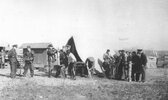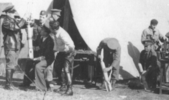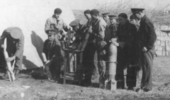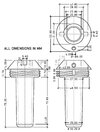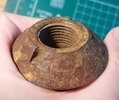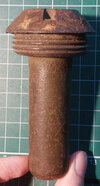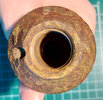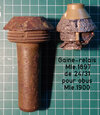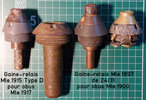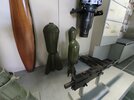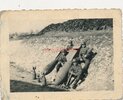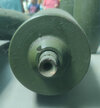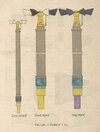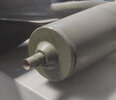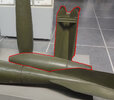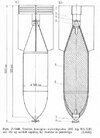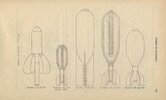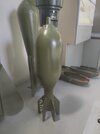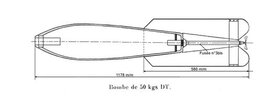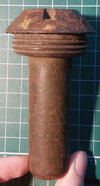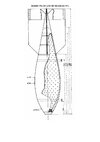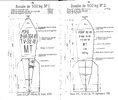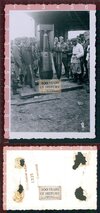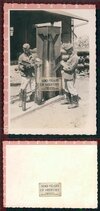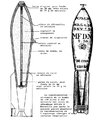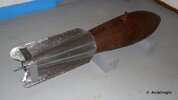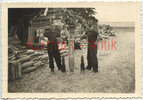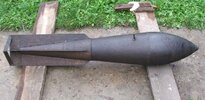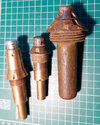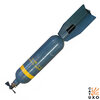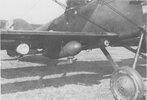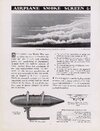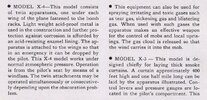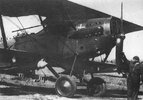Speaking or Romanian aircraft bombs, I think I might be in possession of a gaine/adaptor for one such bomb. I got it from a digger in Odesa in 2011, but other than he found it nearby I have no information about it, since he spoke very little English.
it looks very much like a French "gaine-relais" for the Mle.1900 HE shell from the 75mm Mle.1897 field gun, including having a vertical hole for a locking pin, but other than having the same top diameter - 31mm and the same height of 14mm the similarities stop there. The bottom diameter is larger - 53mm instead of 47mm - and both the inside and outside threads are coarser, so it will not fit French 24/31 fuzes nor will it fit in a shell body.
The piece is in remarkably good condition, including a lot of original khaki paint, which is why I thought it might come from an aircraft bomb, because Romanian HE shells of the era were all painted yellow. Another possibility that I thought of was it came from a Russian shell, since one French produced HE variant for the 76.2 mm divisional gun model 1902 also had a similar gaine/adaptor to the French shell, but not only that was threaded to use the same 24/31 French fuzes and had the same dimensions at the French adaptor, it was also never painted khaki either in Russian or Romanian use (we painted it yellow, the Russians kept it unpainted or painted it blue-grey)
As for what bomb it might have come from, well, that's where we hit a snag, because even though the French bombs we also used had similar adaptors so it could have come from one of them, according to the
1932 "Manuel de Munitions" available on Gallica, the French aerial bomb fuzes had the same thread as the 24/31 shell fuzes. So I'm guessing the bomb this comes from is probably a uniquely Romanian design.
Finally, there are also some bombs exhibited at the Bucharest Military Museum with this type of adaptor (Picture by Irod7) , but they seem to be mostly trench mortar bombs repurposed to be dropped from aircraft so their adaptors should also be threaded for standard 24/31. Besides, the aviation section is currently closed for renovation, so I don't have access.
